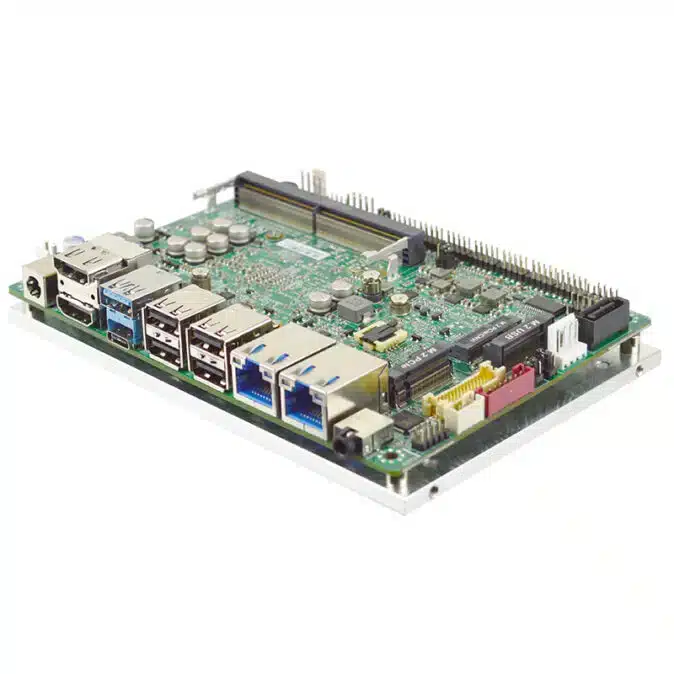
DDR5 vs DDR4: Does it Matter?
Posted on April 8, 2024
When shopping for PC memory, we consider the capacity of the RAM, but does the version also matter? What’s the difference between DDR5 and DDR4? Let’s take a look.
The Rule of Doubling
As a rule of thumb, new versions of any sort of hardware interface double the speed and bandwidth. This holds not just for RAM, but even for technologies like USB, SATA, WiFi, etc.
The DDR5 follows this trend as well, offering twice the bandwidth, effectively doubling the rate of data transfer. In terms of numbers, this means potentially going up to 51 GB/s from the earlier 26 Gb/s.
And not just transfer rate; the clock speed, which decides access rates and can bottleneck the processor, is doubled by DDR5 as well. DDR4 is capable of a maximum frequency of 3200 Mhz, which has been bumped up to a whopping 6400 Mhz with DDR5.
Reduced Power Consumption
When it comes to embedded computers (or even portable PCs like laptops), power consumption is a major factor. This is because the higher the power drawn by the board, the higher its heat output, driving up system temps and adversely affecting performance.
This is where DDR5 shines. Not only does it decrease the memory voltage to 1.1V, but it also has onboard voltage regulators to maintain a stable voltage and improve performance.
There is even a dedicated low-power version of the DDR5 memory (LPDDR5) meant for mobile processors. It consumes even less power and is ideal for IoT and similarly small embedded systems.
Integrated Error Correction
Any data transmission process is subject to some errors creeping in, which is traditionally overcome by redundant data transfer. However, modern interfaces have been moving toward error correction instead, allowing for more efficient transfer of information.
DDR5 is the first DDR version to employ in-built error correction. There are both ECC and non-ECC versions of DDR5, with the ECC variants having extra data lines to
directly send the error-detection data to the CPU. The non-ECC versions of memory come with on-die error detection instead.
Independent Channels
We are all aware of the benefits of dual-channel memory, which is why it is always recommended to install two RAM sticks (or DIMM) for maximum performance. But what if every DIMM had two channels to begin with?
DDR5 makes this a reality. Every DDR5 DIMM comes with two subchannels of its own, each with its own CA bus to control the flow of data independently.
This means that DDR5 can perform very well even with a single stick of RAM, though of course, two DIMMs will still significantly improve performance. This is a big leg up for many industrial and IoT applications where small computers need to be deployed at scale, and can only afford a single stick of RAM.
Increased Capacity
Performance improvements are well and good, but most of us measure the quality of RAM by its capacity. And in that metric as well, DDR5 is a weight class above DDR4.
And not just double; the addition of error-checking mechanisms and more stable voltage regulation means that the modules can be more densely packed than ever, leading to 4 times the capacity.
Yes, DDR5 sticks can go up to 128GB per DIMM compared to the 32GB possible in DDR4. This means that memory-intensive applications can easily run on a single RAM stick as well, reducing the costs of deploying and running such systems.
Is it Worth Upgrading to DDR5?
We have discussed how DDR5 is a major improvement over DDR4, but is it enough to justify an upgrade? The answer, as always, depends on many factors.
The first thing to keep in mind is that the same motherboard cannot support DDR4 and DDR5. So if you already have systems using DDR4 memory, upgrading them is not really possible.
But if you are looking to invest in a new setup, it might be worth it to go for DDR5 memory. Whether your application needs higher capacities or just wants to keep it to a single RAM stick, virtually every kind of system can benefit from DDR5.
